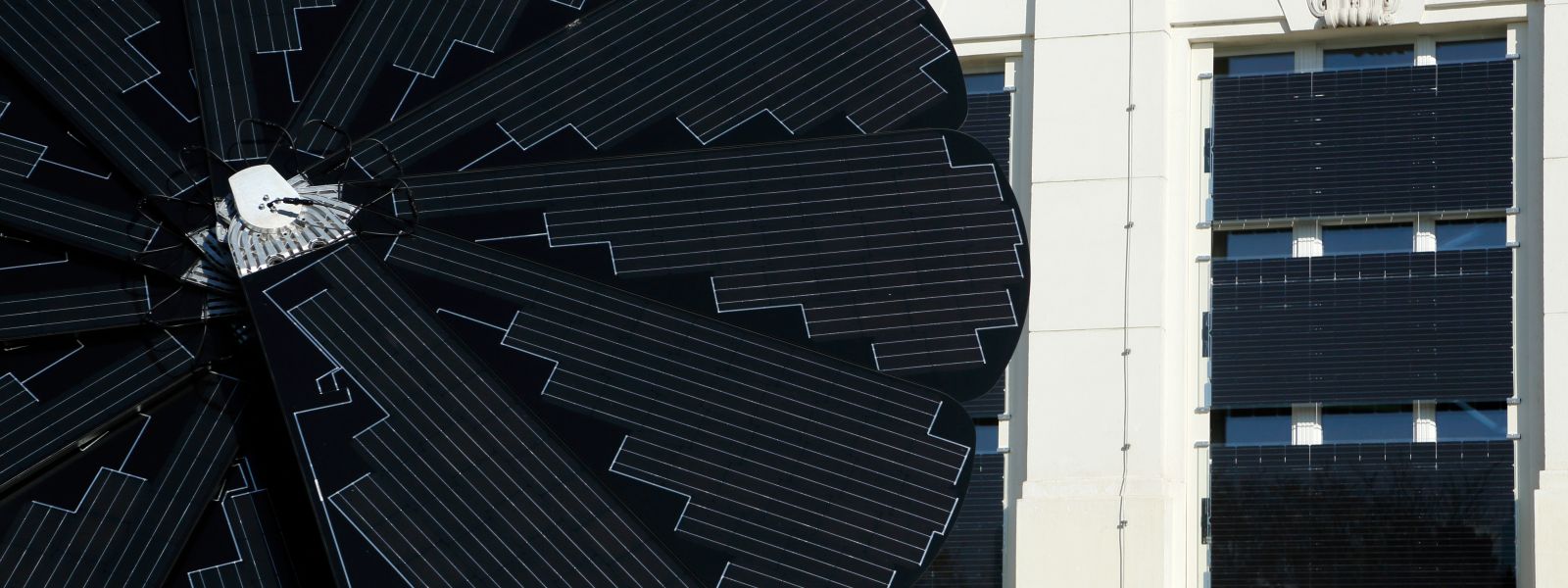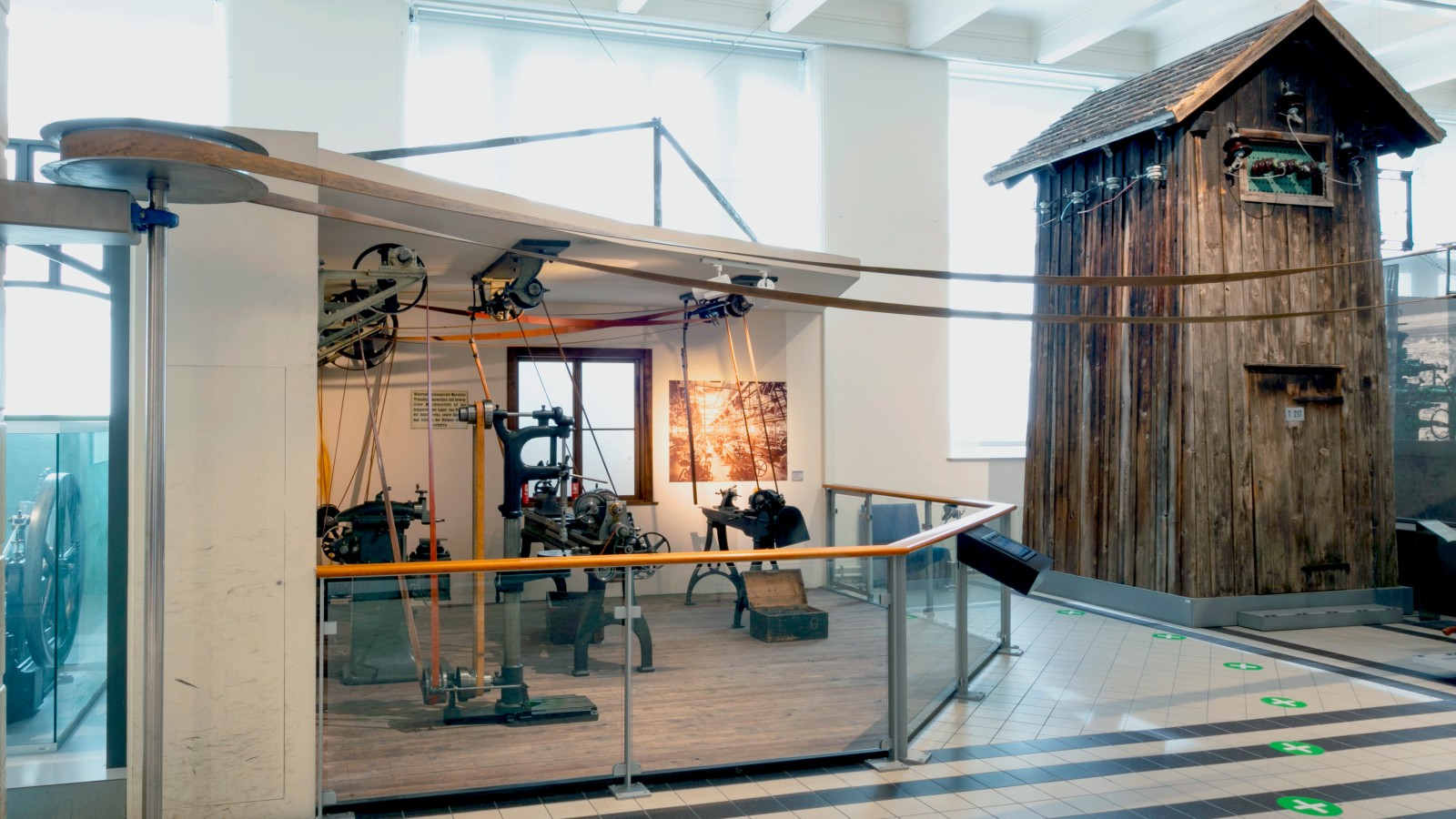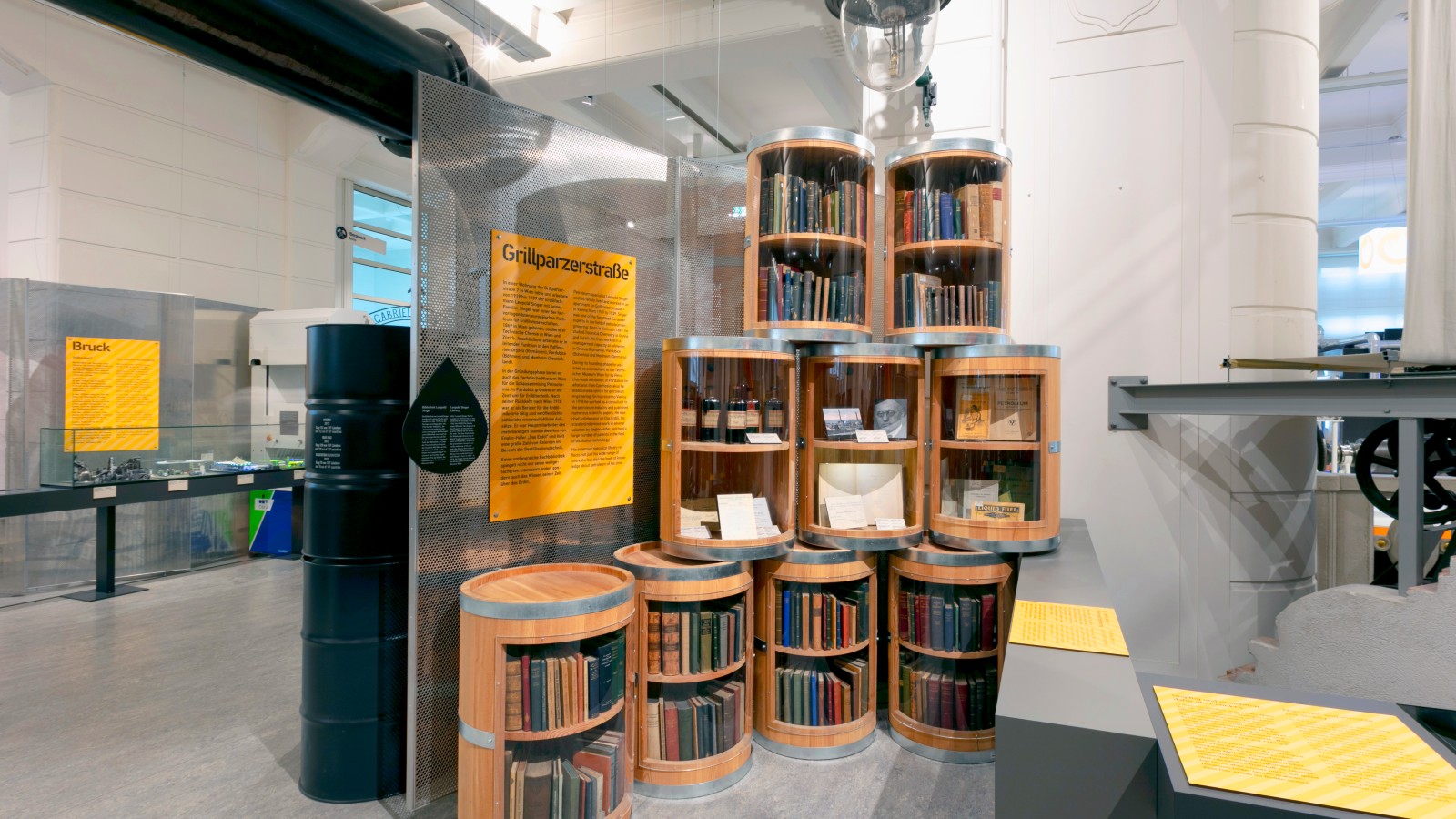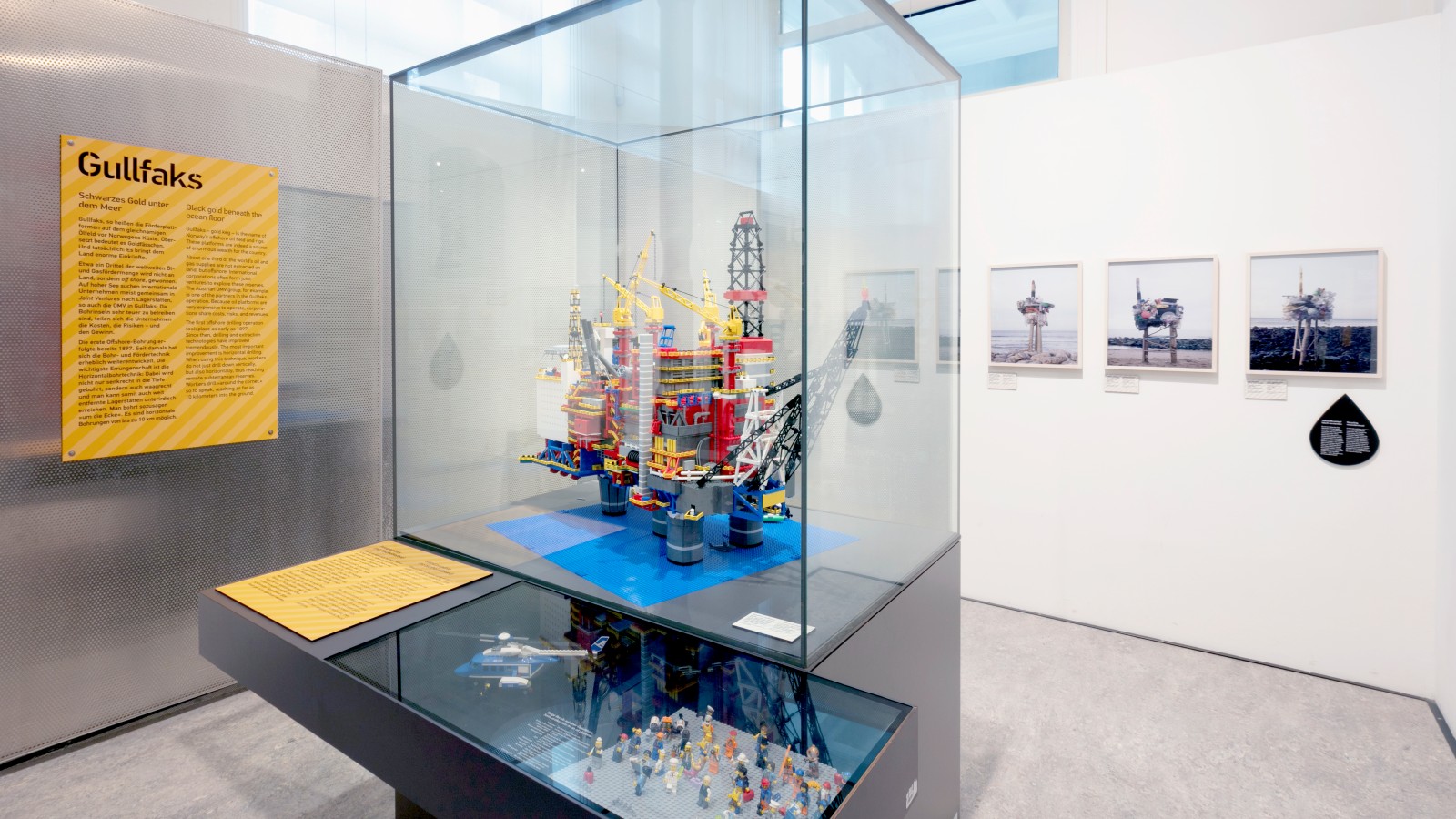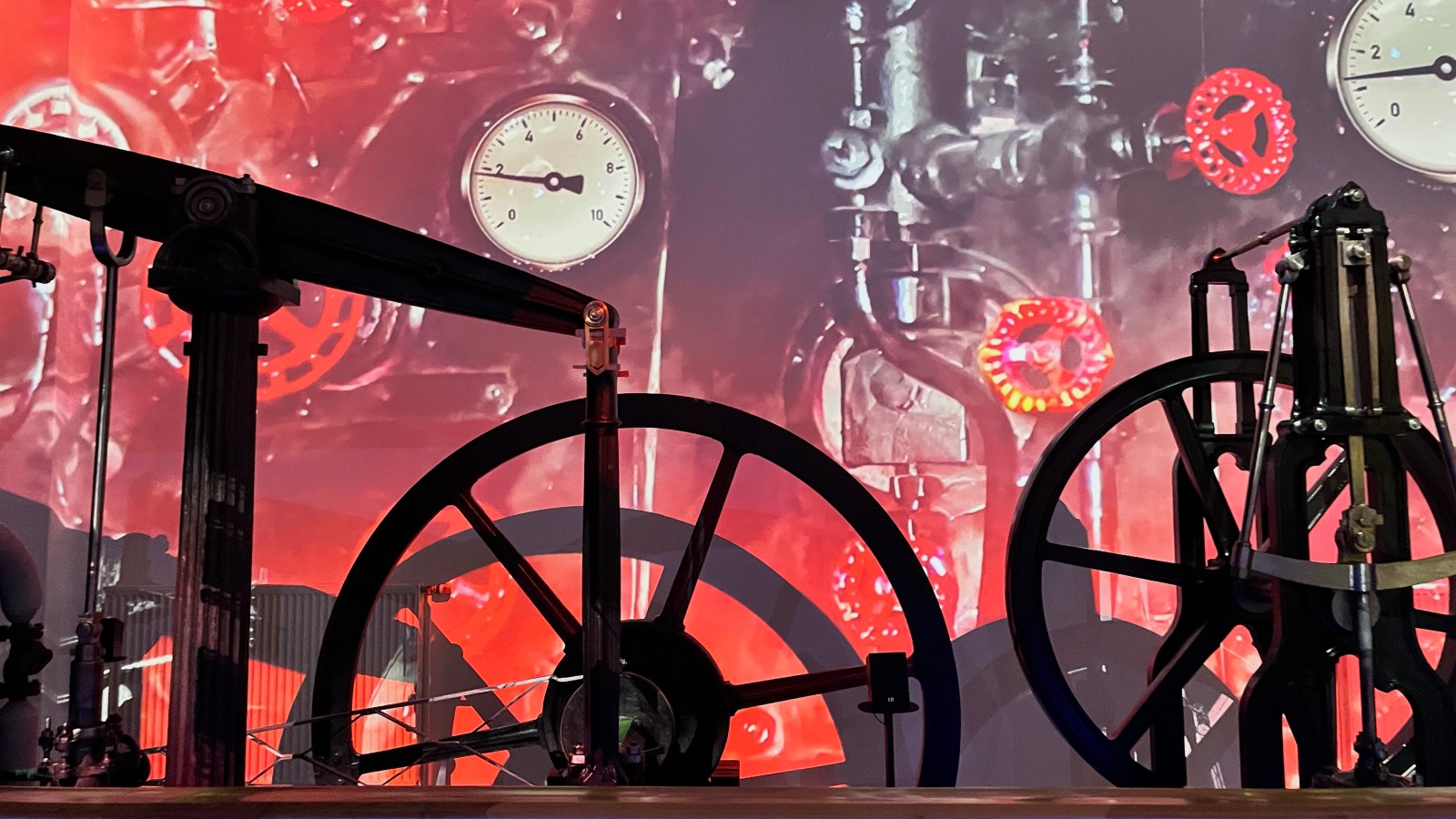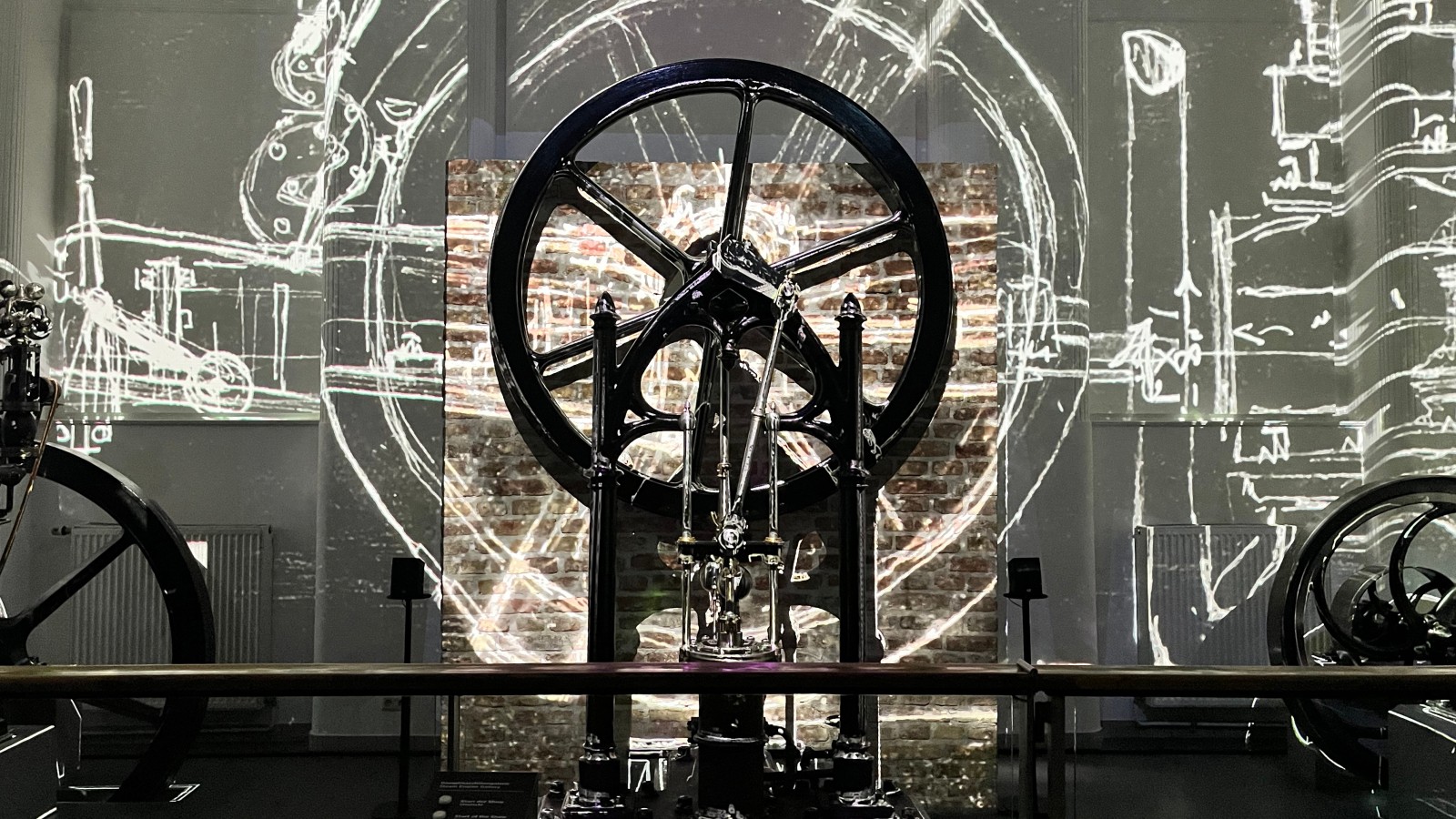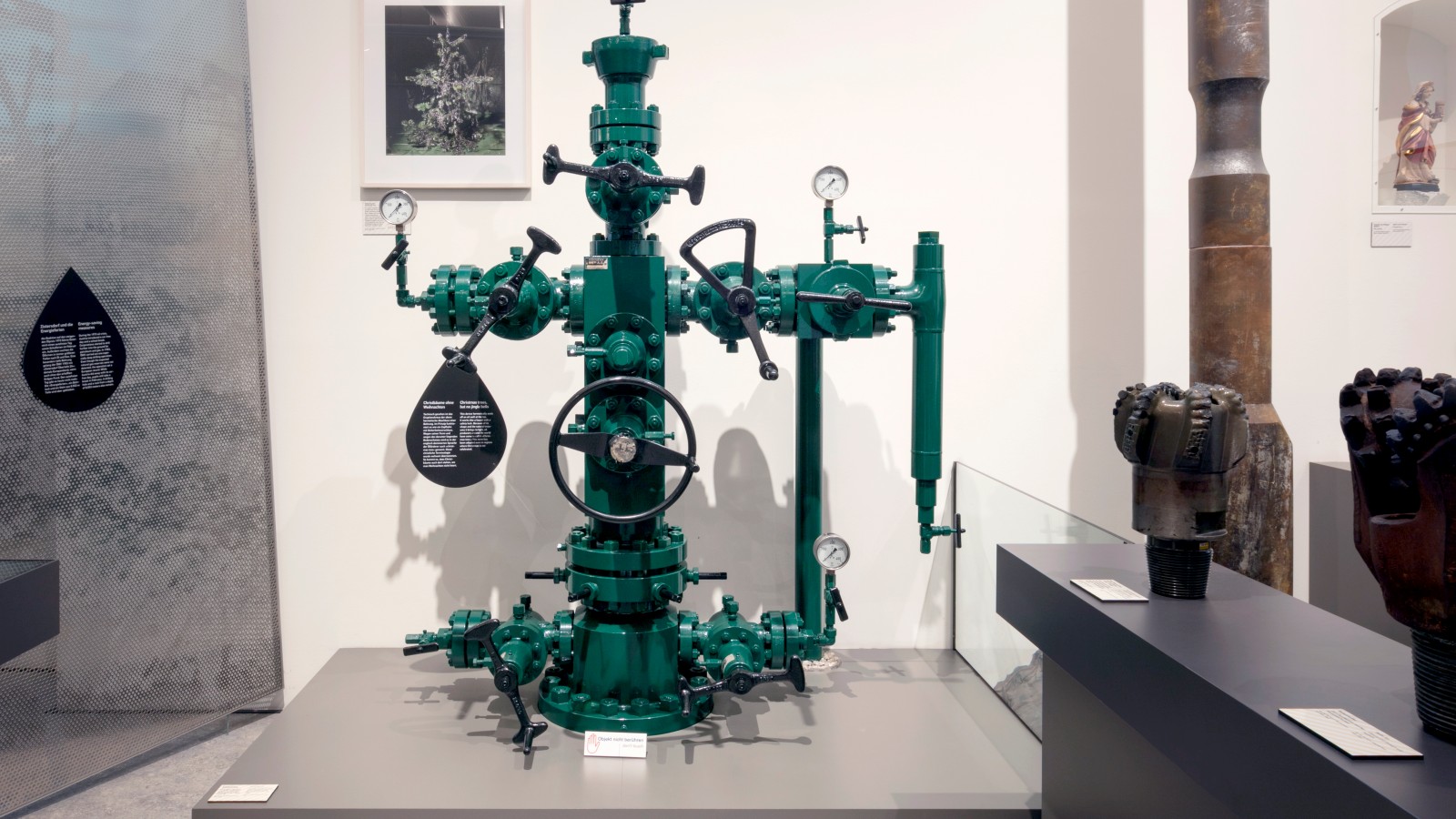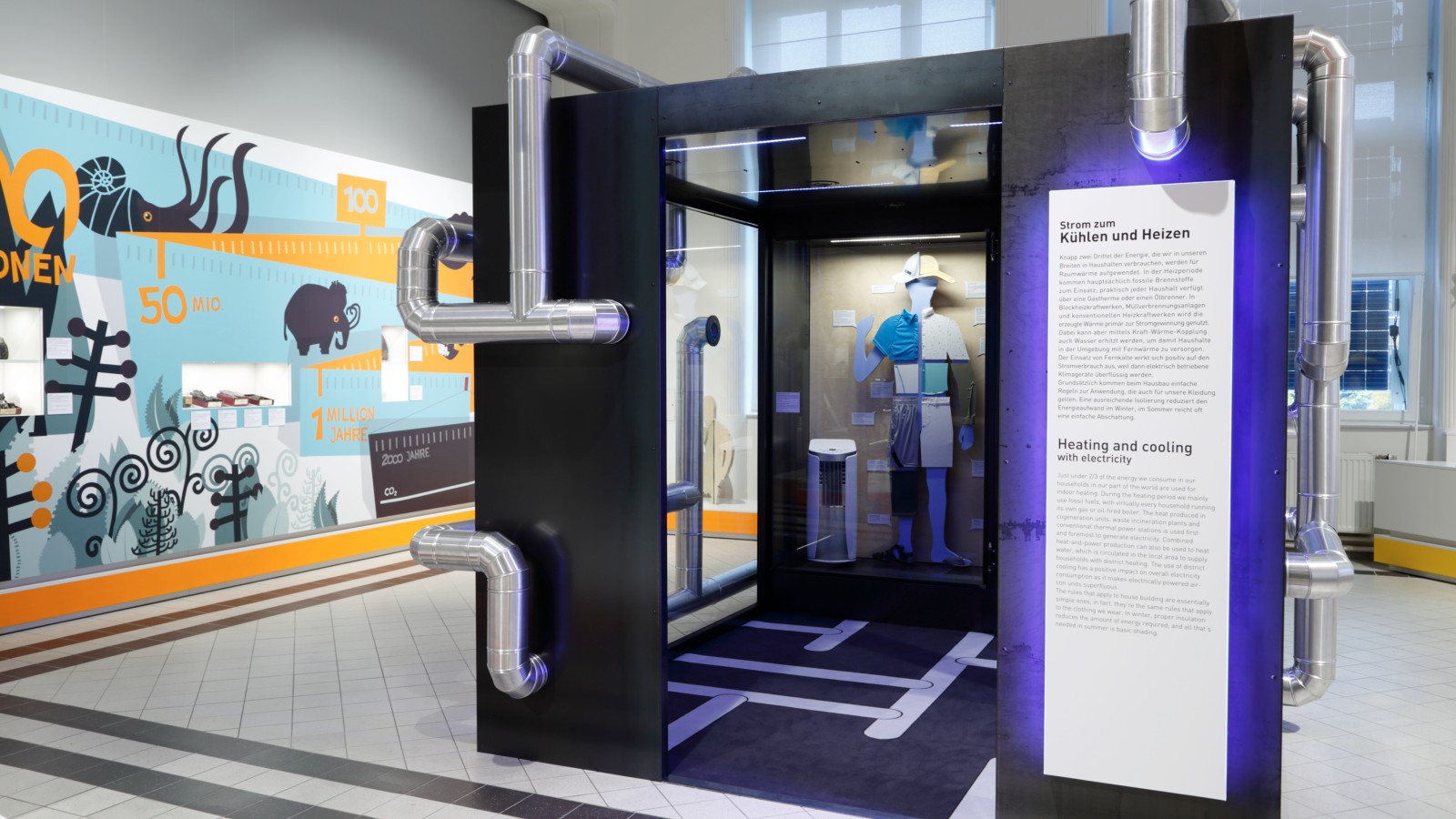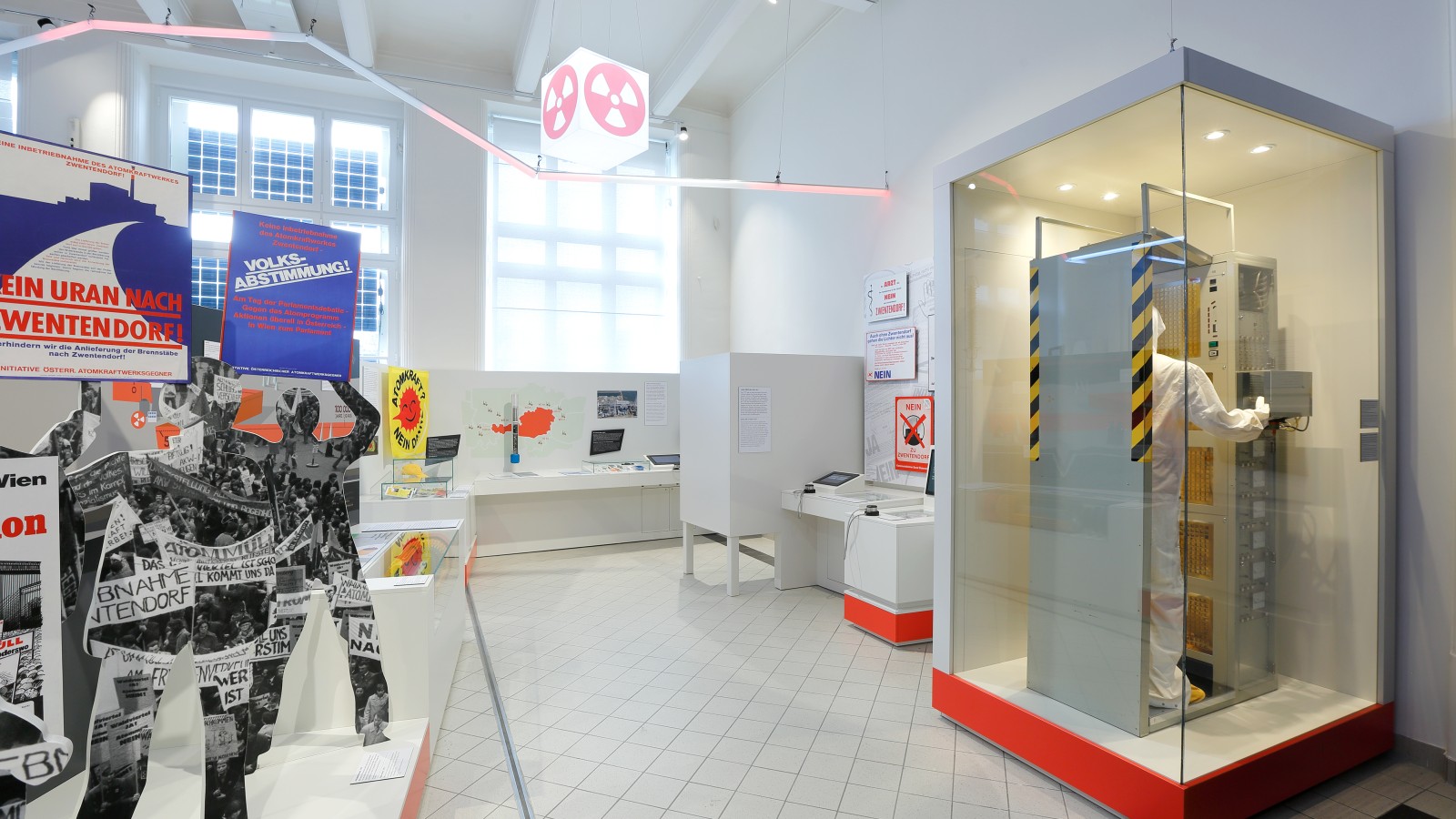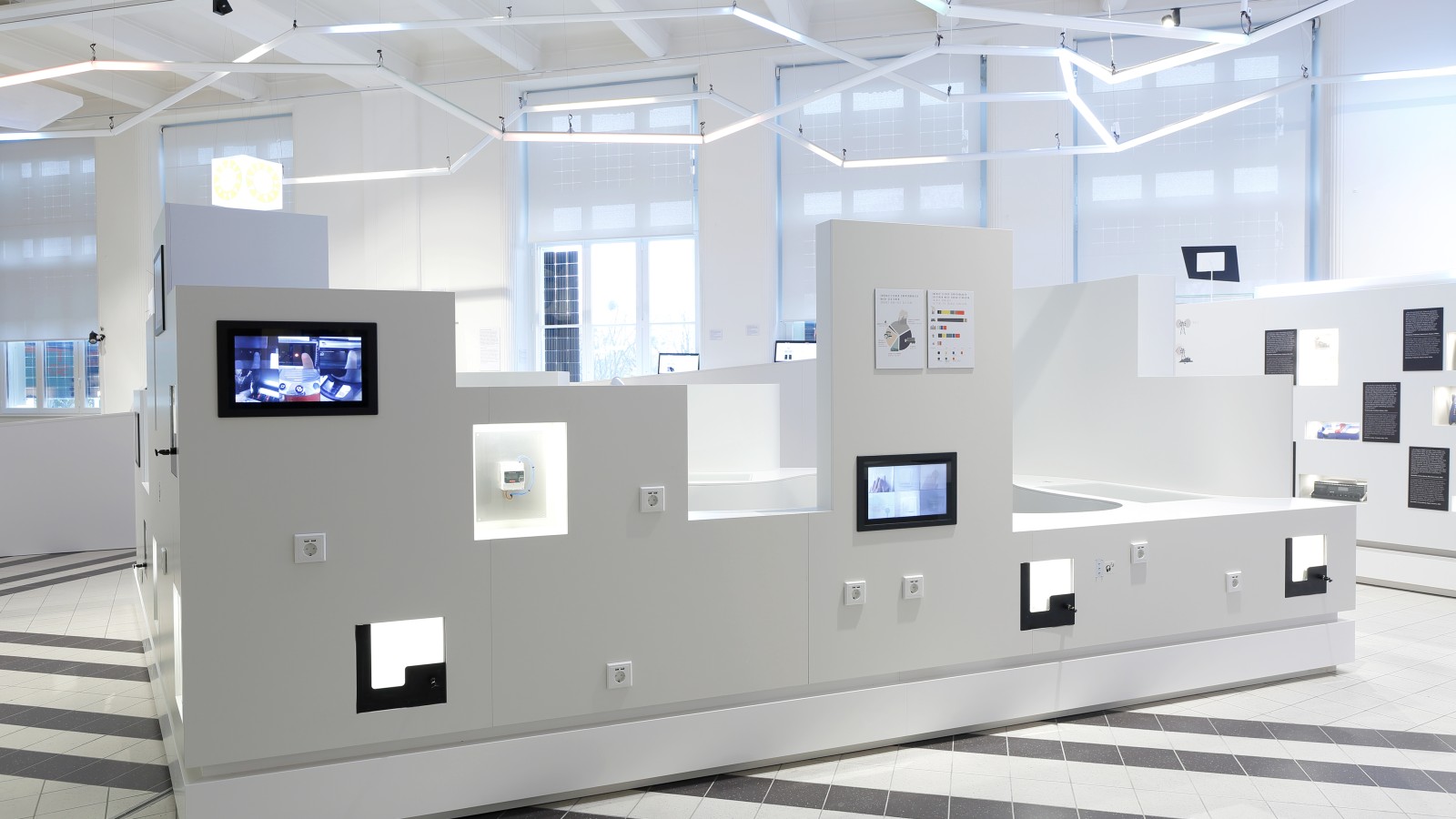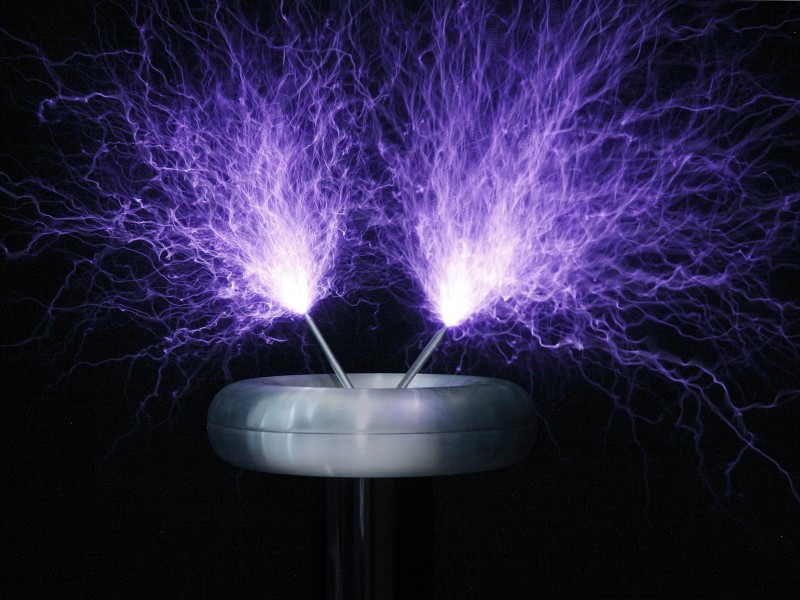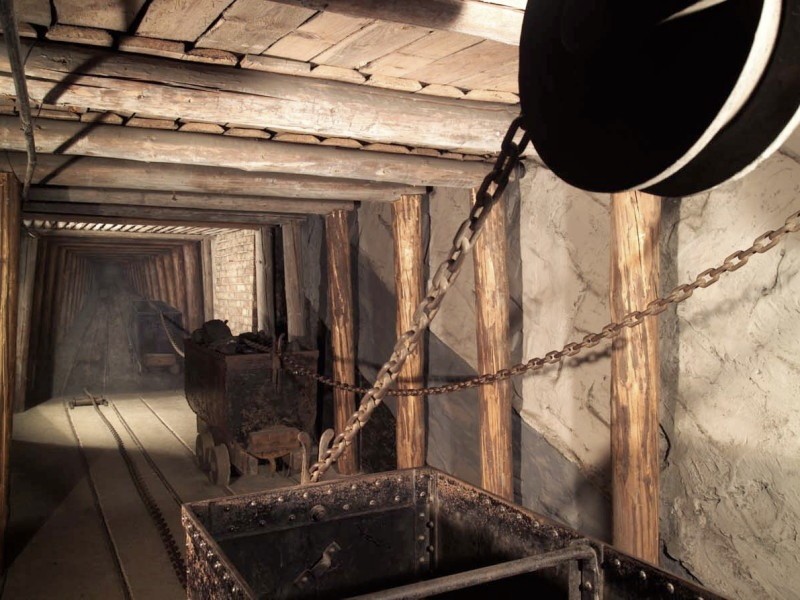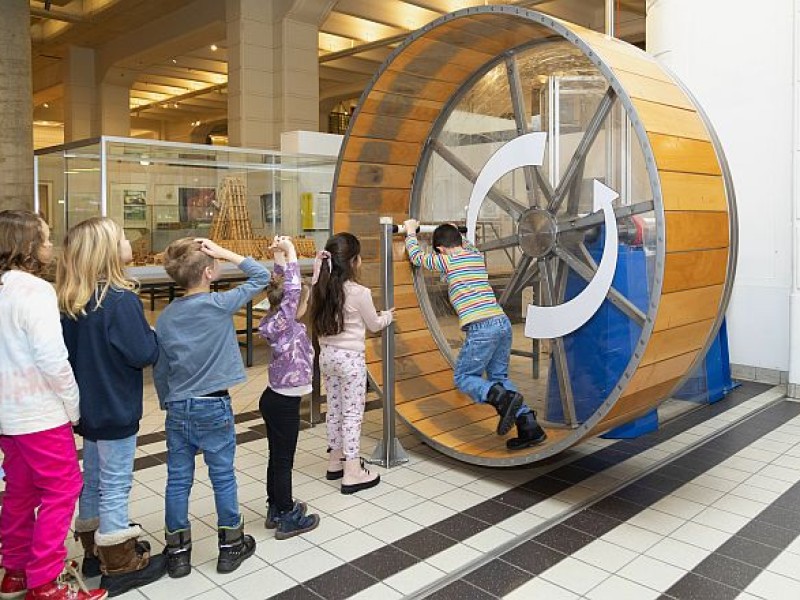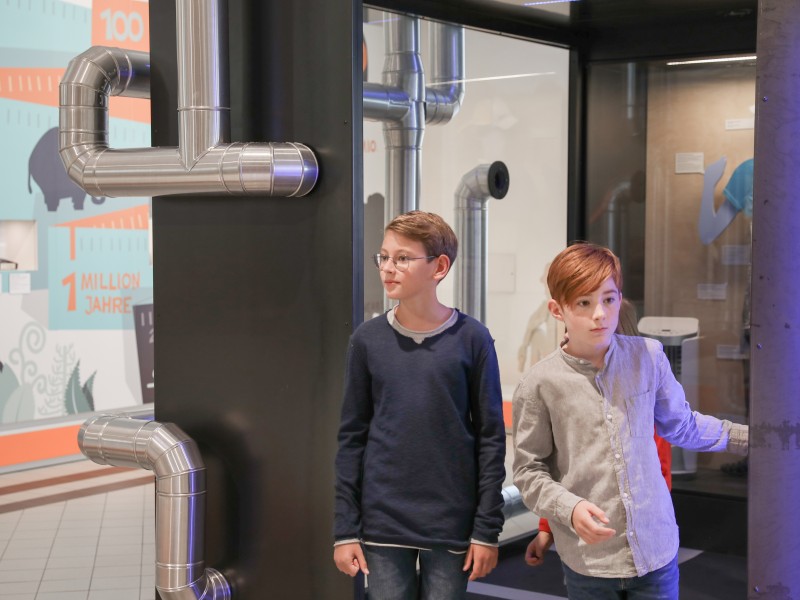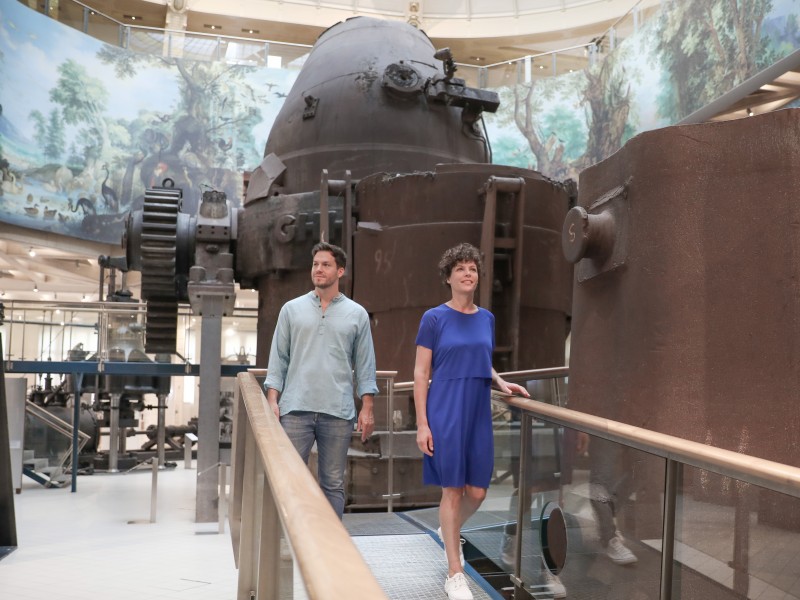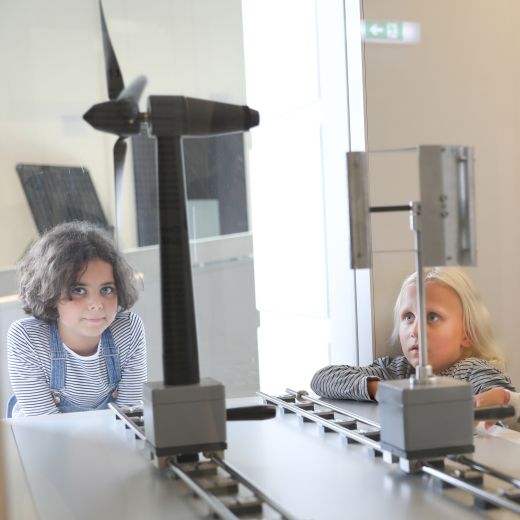The age of power stations
From the 18th century onwards, coal was increasingly used as an energy source, leading to the development of steam engines, railways and later on also combustion engines. Power plants were built to supply limited areas or factories with driving power, gas or electricity.Steam engine gallery
The Industrial Revolution began in the 18th century and fundamentally changed the (working) world. Literally fuelled by the steam engine, it transformed weaving and spinning mills as well as coal, iron and steel production. The Technisches Museum Wien (Vienna Museum of Science and Technology) pays tribute to the significance of this technology with its “steam engine gallery”. Since August 2023, the exhibition can be experienced in a new context: Six historical steam engines from the period between 1830 and 1908 are on display to showcase the development of this technology – using state-of-the-art video techniques. The 7-minute show makes the steam engines come alive with sound, light effects and video mapping. The free show illustrates the physical principles and explores the technical, social and economic changes brought about by steam engines.The age of networks
Since the 20th century, energy providers and consumers have extensively networked. Traditional energy sources such as the sun, wood, water and wind were supplemented by petroleum, natural gas and uranium. Electrical energy has gained tremendous importance as a universally usable form of energy. Large-scale networks, such as the gas and electricity supply networks or the petrol station network, were created for the provision and use of energy.The power grid
Electricity has become an essential part of our everyday life because it powers almost everything. That is why a section of the “Energy” permanent exhibition is dedicated to the Austrian power grid. The journey of electrical energy from power plants to consumers is explained in an easy-to-understand way. The subject areas relating to electricity are connected to form a symbolic power grid that can be monitored and controlled in a control centre. Those who are interested can play what is called the load distribution game, where they are tasked with the challenge of maintaining the flow of energy in the exhibition’s power grid. Further interactive stations allow visitors to experience how various technologies work.The permanent exhibition shows that there are still many open questions about energy. What technologies will we be using in the future? Is technical progress compatible with an eco-friendly lifestyle? And when will we be able to answer these questions?
Teenagers & Adults
